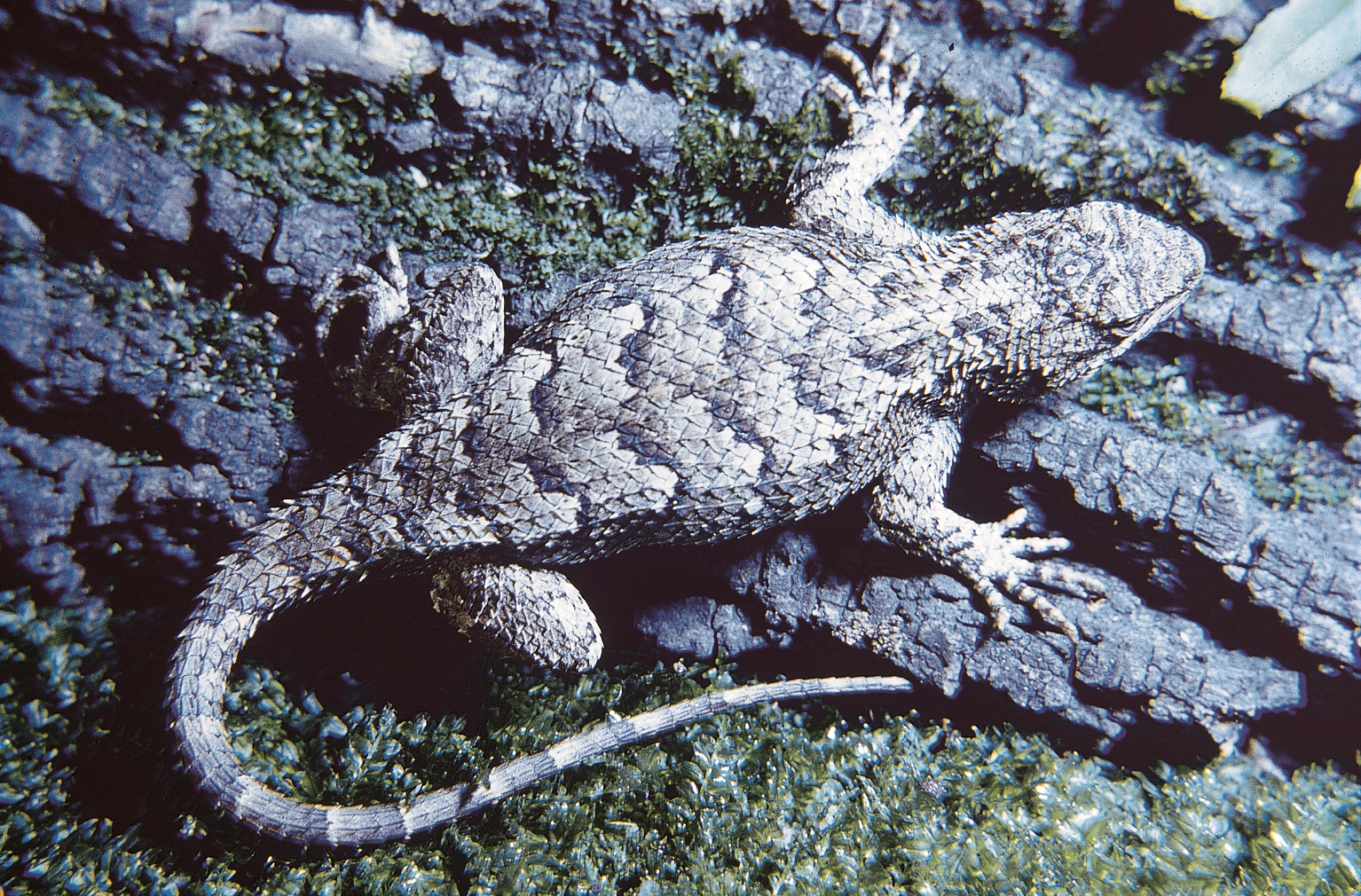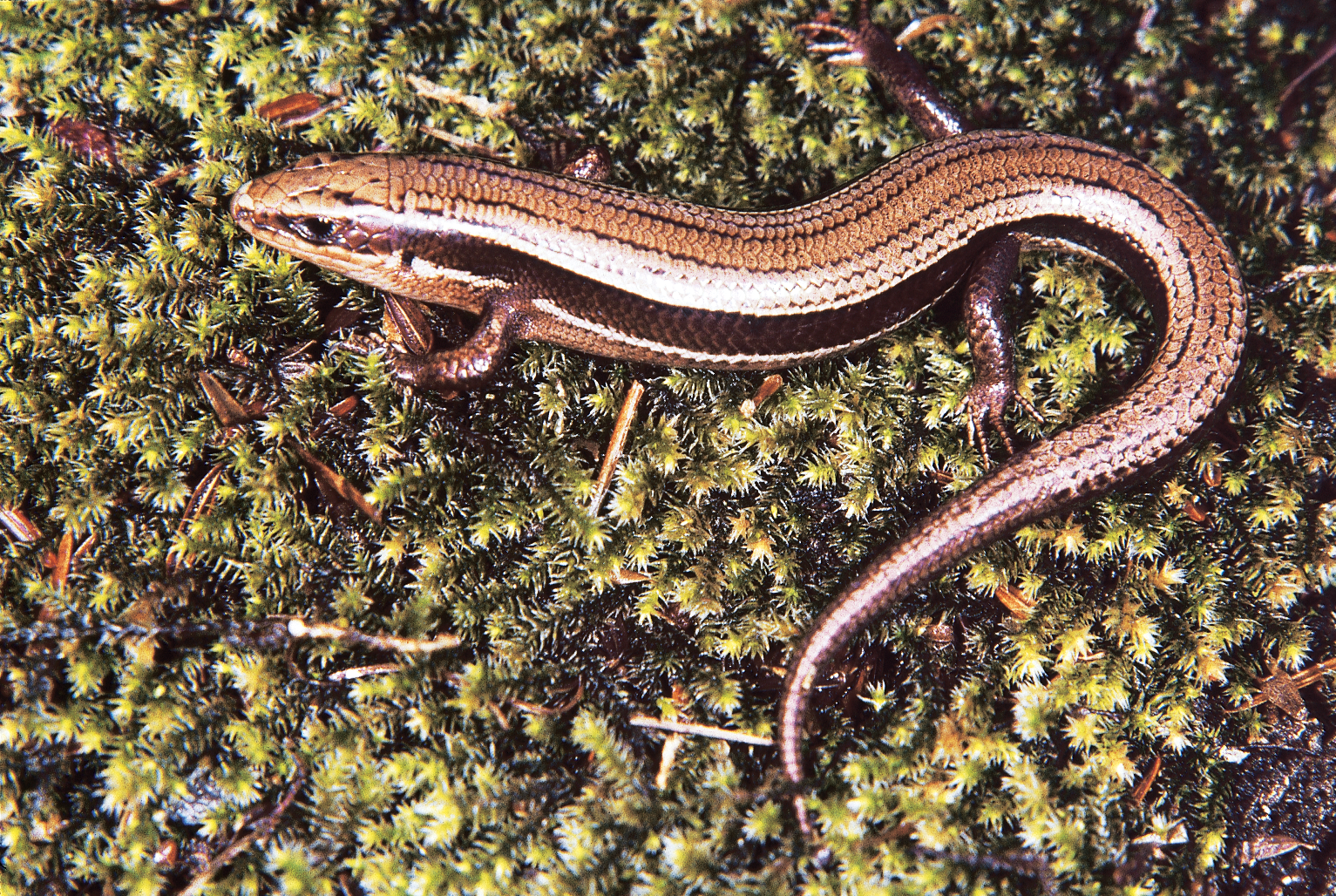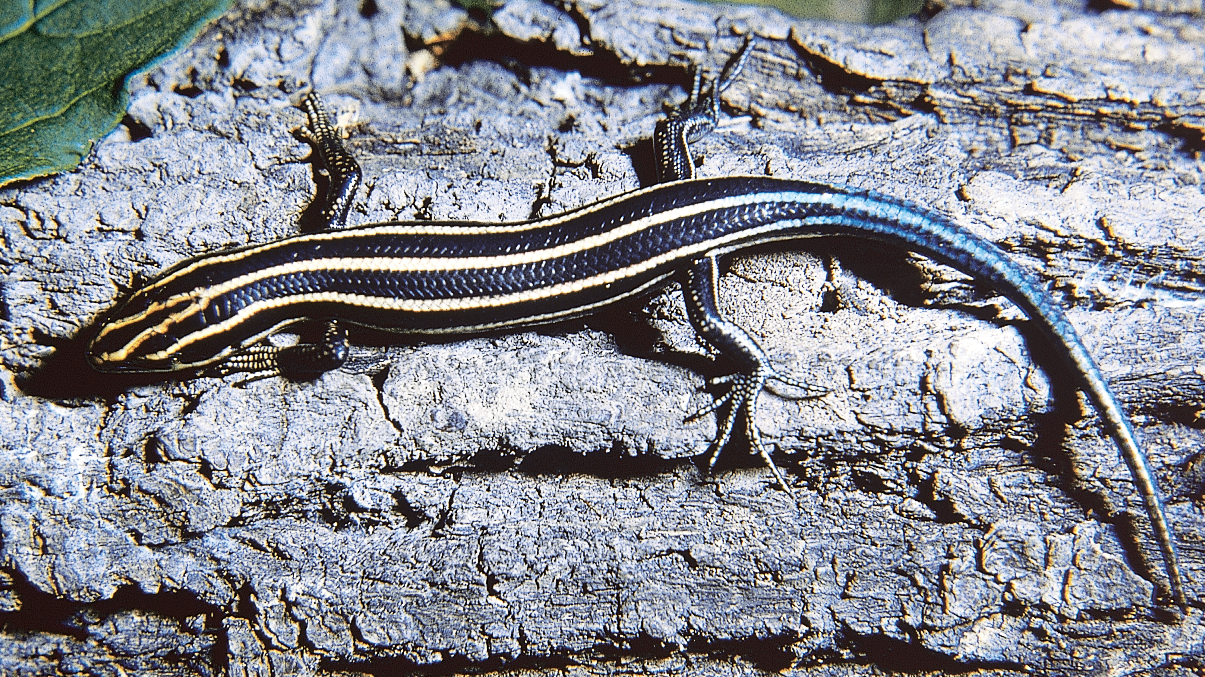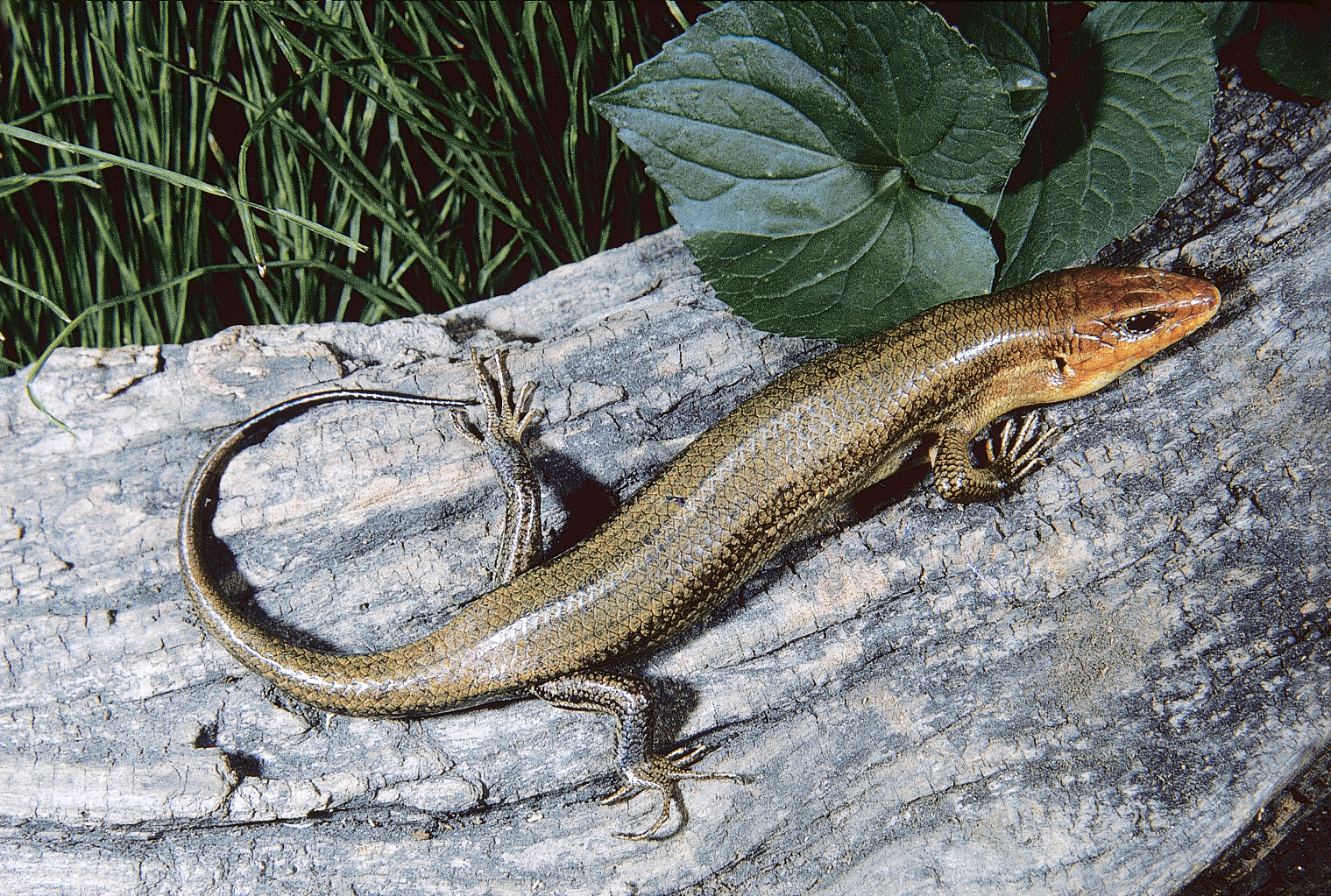PENNSYLVANIA LIZARDS AND SKINKS
Lizards make up the largest living group of reptiles, numbering about 3,000 worldwide. They are more predominant in warmer, drier areas. In this country, most are found in the southwest. Pennsylvania has four species from two genera and two families. They become more rare as they move northward. The lizards common to Pennsylvania are harmless.
Lizards for the most part are diurnal. They live in trees, on the ground and in burrows beneath the ground. They breed in the spring and most lay eggs following internal fertilization. Lizards possess the sensations of smell and taste much as we know them. Snakes do not. However, like snakes, many lizards are also able to use the tongue and Jacobson’s organ to sample the air around them.
EASTERN FENCE LIZARD
Sceloporus undulatus
 The eastern fence lizard varies from gray to brown. Colors on the belly range from whitish to greenish blue to pale blue. There may be dark, wavy crossbars on the back, which are most evident normally on the female. The male has a blue patch near the base of the throat. The scales on the back of this lizard are keeled and pointed. They are jagged and rough to the touch, which explains its nickname, “spiny” lizard.
The eastern fence lizard varies from gray to brown. Colors on the belly range from whitish to greenish blue to pale blue. There may be dark, wavy crossbars on the back, which are most evident normally on the female. The male has a blue patch near the base of the throat. The scales on the back of this lizard are keeled and pointed. They are jagged and rough to the touch, which explains its nickname, “spiny” lizard.
NORTHERN COAL SKINK
Plestiodon anthracinus anthracinus
 The body of the northern coal skink is brown. Two pairs of light stripes, each enclosing a dark band, extend from the neck onto the tail. There are no light lines on the head of the coal skink, which helps distinguish this skink from the two others found in the state. The breeding male might have a reddish head. The young have a blue tail, but otherwise are marked identically to the parents.
The body of the northern coal skink is brown. Two pairs of light stripes, each enclosing a dark band, extend from the neck onto the tail. There are no light lines on the head of the coal skink, which helps distinguish this skink from the two others found in the state. The breeding male might have a reddish head. The young have a blue tail, but otherwise are marked identically to the parents.
COMMON FIVE-LINED SKINK
Plestiodon fasciatus
 The five-lined skink is brown to black with five broad, light stripes running the length of the body. In some adults, the pattern nearly fades completely with age. As the ground color becomes lighter, the stripes become darker. The tail of the juvenile is bright blue, turning gray as the skink grows older.
The five-lined skink is brown to black with five broad, light stripes running the length of the body. In some adults, the pattern nearly fades completely with age. As the ground color becomes lighter, the stripes become darker. The tail of the juvenile is bright blue, turning gray as the skink grows older.
BROAD-HEADED SKINK
Plestiodon laticeps
 The outstanding characteristic of the broadhead skink is its head. On the male, it is large and gives the impression of having swollen cheeks. The body of this reptile is brown to olive-brown and the breeding males are striking with their orange-red heads. There may be five light stripes down the body of both sexes during their early adult life, but these usually fade with age to become indistinguishable in the fully adult male.
The outstanding characteristic of the broadhead skink is its head. On the male, it is large and gives the impression of having swollen cheeks. The body of this reptile is brown to olive-brown and the breeding males are striking with their orange-red heads. There may be five light stripes down the body of both sexes during their early adult life, but these usually fade with age to become indistinguishable in the fully adult male.
The Pennsylvania Amphibian and Reptile Survey (PARS) helps determine the distribution and status of all amphibians and reptiles, including lizards and skinks, throughout Pennsylvania.
Opens In A New Windowhelps determine the distribution and status of all reptiles and amphibians, including lizards and skinks, throughout Pennsylvania.